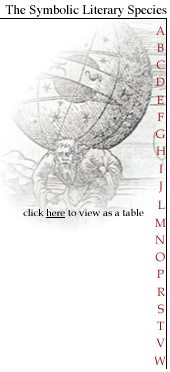
The Symbolic Literature of the Renaissance


Support the Library!
Buy your books here.
home
authors
books
contributors
books for sale
links

| ||||
|
|
The Library of Renaissance Symbolism The Symbolic Literature of the Renaissance |
 
|
||
|
Support the Library! |
Find On Worldcat |
Find On This Site |
||

|
The festivals of the late Middle Ages and Renaissance were legion. They included the weddings, christenings, funerals, and civic visits of royal personages and other notables, religious processions on Saints days, pageants and masques. Menestrier (1669) discusses tournaments, jousts, carrousels, circuses, quadrilles, floats, lotteries, fireworks, military displays, ballets, water festivals, masques and animal performances and as a result of this expertise he became the acknowledged promoteur in arranging such things for the French court, the nobility and municipalities. Tesauro includes Equestrian Games in the genre and he defines these as ‘metaphors alluding to some Military activity by means of mounted displays’. These festivals or spectacles were symbolic on two levels. On the one hand they involved dramatic presentations with didactic themes and on the other they often required specially constructed temporary pavilions and other monuments decorated with emblems and devices. The spectacoli as they were called in Italy were sometimes vast performances involving casts of hundreds. They combined drama, music, song, dance, splendid costuming, and stage spectacle with a plot derived from the myths or the Christian allegories. Leonardo da Vinci is known to have designed the stage machinery for one of these spectacles. Ben Jonson used emblems, devices and hieroglyphs in his court masques especially The Masque of Blacknesse presented in 1605 and the Masque of Beautie of 1608. In the former, Jonson is quite open that he is trying to imitate the Egyptian hieroglyphs and he uses motifs taken directly from Ripa’s Iconologia. Tesauro is quite scornful of masques. ‘These are either weighty and obvious as when they represent a Hero or a God with appropriate appearance. Or else they are capricious and silly, imitating appearances in a strange way or representing them disproportionately or in some imaginary manner.’ Modern commentators have however seen the use of the emblem in these theatrical environments as the highest point in the art. ‘Pageantry is itself the quintessence of emblematic art.’ (Wickham 1980) And ‘it were by no means too much to say that in the masque the fashion for the courtly impresa and for the emblem-book reached its completest expression.” (Nicoll 1937) Often these spectacles took the form of triumphal processions and pageants which had become a popular entertainment throughout Europe particularly in Elizabethan England. Puttenham commented upon them in his Art of English Poesie, Francis Bacon wrote an essay, On Masques and Triumphs decrying the genre and Sidney described one in his Arcadia. The most influential of the Triumphs were the series of poems by Petrarch on Love, Chastity, Death, Famine, Time and Eternity. According to one scholar, the Trionfi outshone the Canzonieri and Dante’s Commedia in popularity for more than 100 years. They were hugely influential on all forms of Renaissance representation including poetry, painting, tapestry, medals, theatre and emblems. Ironically, the poem might just have been confined to the first two Triumphs but for the Black Death, that great scourge of plague which swept Europe from 1347 to 1350 and which, it is estimated, killed one third of the population. The Triumph of Death was written in 1348 and the others followed later at intervals. The edition of the Triumphs of 1471 with a commentary by Antonio da Tempo was one of the first printed books. The description of festivals catalyzed the genre of contemporary ‘festival books’ the vast number of which was challenged only by the output of emblem books. One bibliography alone enumerates some 2,800 in the genre (Watanabe-O’Kelly).
|